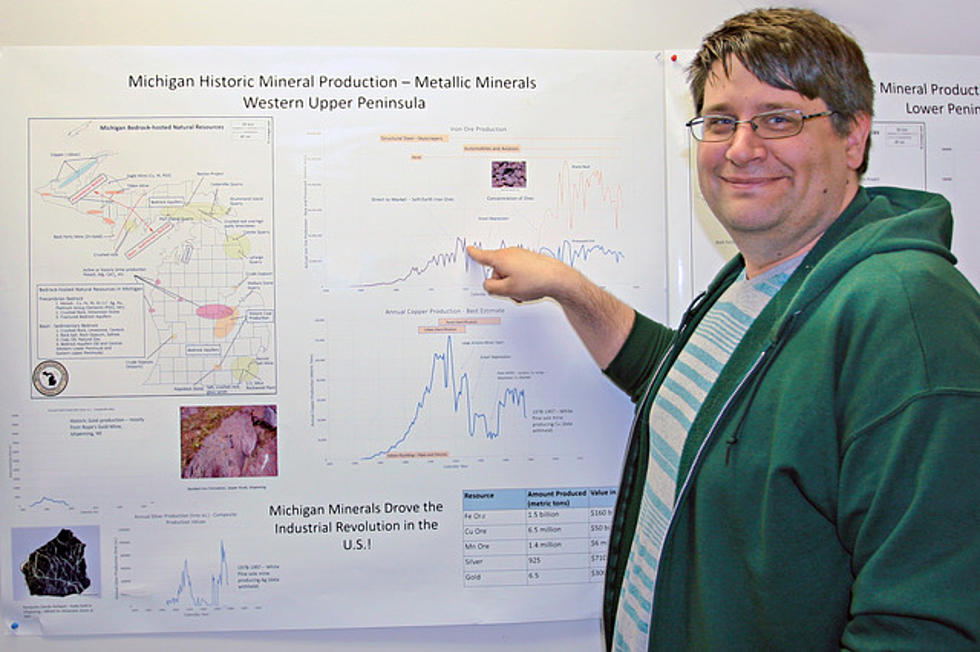
Hitting The Mother Lode; Michigan Has Critically Needed Minerals
Photo: Western Michigan University
As the Trump Administration has identified a list of 35 critically needed minerals, Western Michigan University is applying federal grant money to study the location and amounts of those minerals located in the state.
WMU says magnesium, platinum and potash are just some of the critical minerals found in the state that the school is studying and investigatin with money from a grant from the U.S. Geological Survey. Another important point: Nearly all cell phones and computers use platinum group minerals.
"Thirty-three minerals and two mineral material groups appear on the list.
• Minerals: aluminum (bauxite), antimony, arsenic, barite, beryllium, bismuth, cesium, chromium, cobalt, fluorspar, gallium, germanium, graphite (natural), hafnium, helium, indium, lithium, magnesium, manganese, niobium, potash, rhenium, rubidium, scandium, strontium, tantalum, tellurium, tin, titanium, tungsten, uranium, vanadium and zirconium.
• Platinum group metals: iridium, osmium, palladium, platinum, rhodium, and ruthenium.
• Rare earth elements group: cerium, dysprosium, erbium, europium, gadolinium, holmium, lanthanum, lutetium, neodymium, praseodymium, samarium, terbium, thulium, ytterbium and yttrium.
The President's executive order and the nation's critical and non-critical mineral commodities by reviewing Mineral Commodity Summaries 2019 at on.doi.gov/2Xr2Aot." - Source: WMU release.
"The Michigan Geological Survey, part of WMU's Department of Geological and Environmental Sciences, notes that the state has two geologically distinctive areas. One area, the western Upper Peninsula, has igneous and metamorphic rocks that host well-known, abundant and varied metallic mineral resources, including copper, iron, nickel, platinum group minerals, manganese and cobalt. The region also has some graphite resources and deposits of a phosphate mineral that contains certain rare earth minerals. Researchers have documented the presence of uranium, as well. Meanwhile, geologic formations in the Lower Peninsula and eastern Upper Peninsula consist of sedimentary deposits that host non-metallic mineral resources, including a large deposit of potash, and lesser amounts of natural brine minerals, helium, magnesium, lithium, manganese, strontium and cesium." - Western Michigan University's Department of Geological and Environmental Sciences.
More From WKMI





![You Won’t Believe This, But There’s Still SNOW in the UP [VIDEO]](http://townsquare.media/site/87/files/2019/02/GettyImages-1085664738.jpg?w=980&q=75)


![Surfing Lake Michigan Is Just Not That Exciting [Boring Video]](http://townsquare.media/site/904/files/2019/07/Surfing-Lake-Michigan-The-Seeker-UrbEx-via-YouTube.jpg?w=980&q=75)
